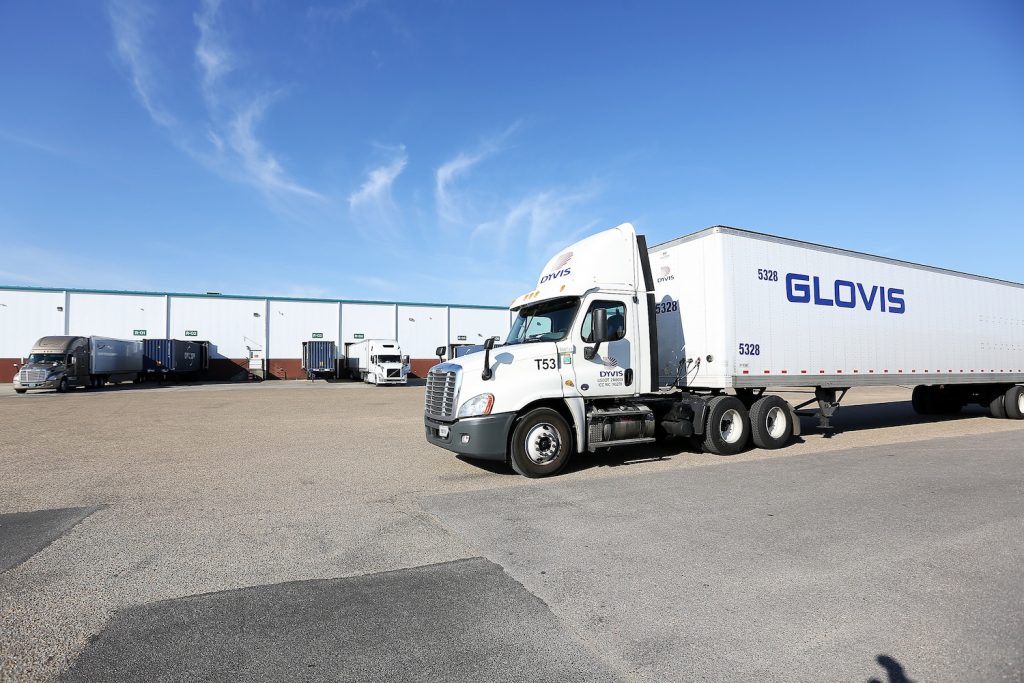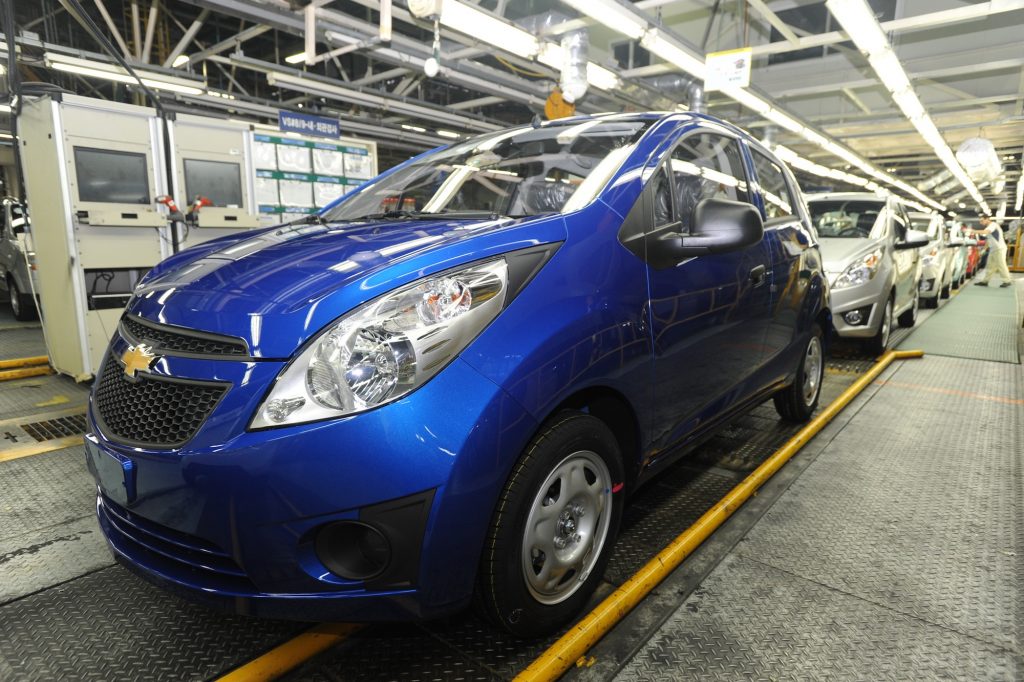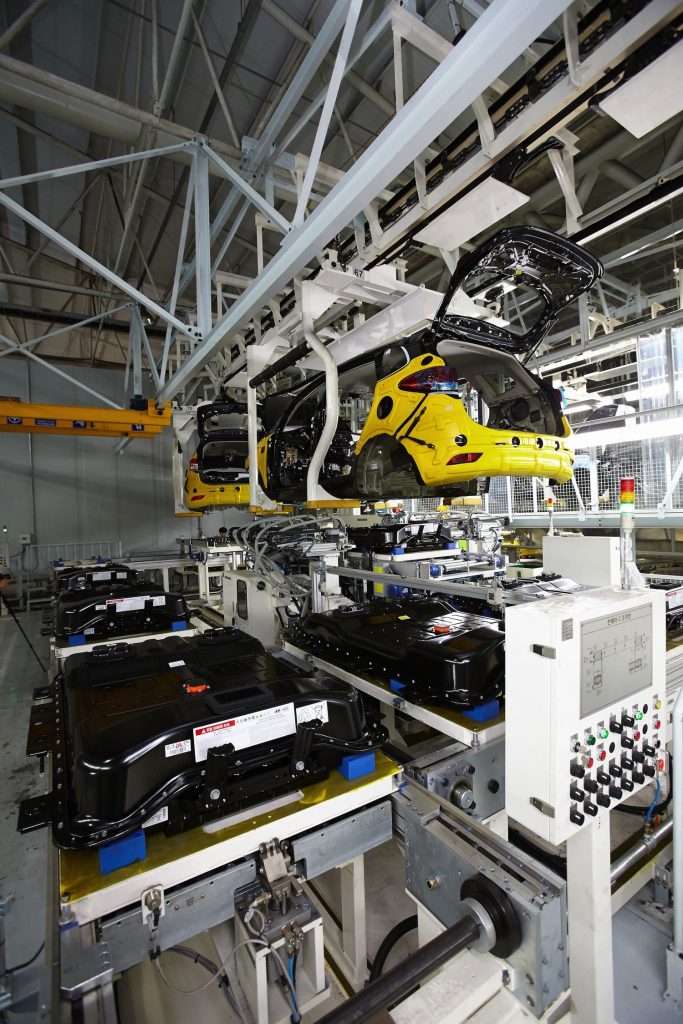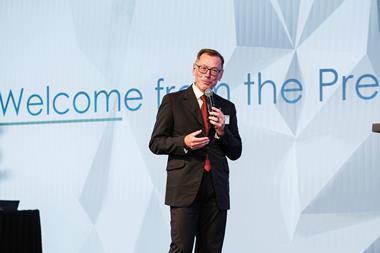 Production growth out of the Korean peninsula is slowing, but its role in the global supply chain looks set to become more important as Hyundai-Kia and tier suppliers increase global production
Production growth out of the Korean peninsula is slowing, but its role in the global supply chain looks set to become more important as Hyundai-Kia and tier suppliers increase global production
South Korea’s supply chain is at the heart of the country’s success in automotive production. A dense network of competitive suppliers with global reach, together with good infrastructure and advanced logistics services, have helped manufacturers build more than 4.5m vehicles per year and become both export champions and major regional players.
In this story...
Tier suppliers are highly developed across the peninsula nation, generating revenues of around 50 trillion won ($45 billion) per year, according to the Korean Trade-Investment Promotion Agency (Kotra). The Hyundai Motor Group conglomerate is responsible for a number of the world’s largest suppliers, including Hyundai Mobis, Hyundai Wia, Hyundai Powertech and Hyundai Dymus. The carmaker uses this supply base to send a significant amount of material to global plants as complete knockdown (CKD) parts, shipping complex modules for reassembly in locations as diverse as India, the US, Europe, China, Russia and Brazil.
Within and beyond the group, South Korean suppliers have a reputation for quality and value. Companies such as brake and suspension supplier Mando Corporation, seating supplier SL Corporation, and tyremaker Hankook have grown with Hyundai-Kia, expanded exports and global output, and increasingly compete with their larger American, European and Japanese peers.
For General Motors, whose Korean unit has significant vehicle and powertrain capacity, South Korean suppliers are consistently the second largest contingent among the carmaker’s ‘global supplier of the year’ winners after US companies, indicating their competitiveness and delivery performance. GM Korea also has a huge CKD export operation that combines powertrain, stampings and other parts from Korea, and sends them to locations including Central Asia, India, Europe, Africa and the Americas. Last year, even with declining output in Russia, GM Korea sent more than 1m CKD units, and has consistently exported around 1.2m units per year for much of the past decade, bar the financial crisis in 2009.
Today, a number of factors, from volume saturation to currency appreciation, are leading Korean suppliers to set up production in other countries. This localisation is evident wherever Hyundai or Kia have plants, but suppliers are also expanding their presence as far and wide as China, Uzbekistan and the US, serving an increasingly diverse customer base.
Part of the competitiveness of South Korean suppliers is an effective logistics network and reliable providers. The market’s largest logistics player is Hyundai Glovis, part of the Hyundai Motor Group and responsible for much of its logistics, although it also serves other industries and companies, especially in its bulk and ro-ro shipping divisions. Glovis had revenues last year of 13.9 trillion won (more than 70% of which is from group business).
While Glovis dwarfs most Korean logistics providers by revenue, there are other notable third party logistics companies. Chunil Cargo Transportation, for example, is an important provider to Renault Samsung and GM Korea, and also a consistent winner of GM’s supplier of the year award.
"Hyundai-Kia has a mid-term aim of reaching 10m cars, however the volume is getting saturated in some markets... [Hyundai Glovis] is in the same position. So we are focusing on the global market besides Hyundai" – Sang Sok Suh, Glovis
The country’s second largest player in automotive, and biggest pure 3PL and parcel carrier, is CJ Korea Express. Since 2012 it has been part of the larger CJ Group, which subsequently merged it with its own provider, CJ GLS. In 2014, the combined entity had revenue of around 4.6 trillion won, with solid margins in its contract logistics business, of which the automotive and electronics industries are important segments. CJ Korea Express is one of GM Korea’s two lead logistics providers (LLP) for GM Korea, along with Chunil, while it also has business with Renault Samsung, Ssangyong, Kia and some 25 tier suppliers.
While still relatively small outside Korea, CJ Korea Express has significant ambitions. Backed by its owner, it is targeting revenues of around 30 trillion won by 2020, with automotive among the target growth verticals, according to Youngho Ko, manager for the development strategy unit. Earlier this year it was among the bidders for APL Logistics, which was eventually acquired by Japan’s Kintetsu World Express. However, the company is undeterred: CJ is currently bidding for Korean provider Daewoo Logistics, which handles some automotive business, and is targeting global opportunities.
“To reach our target, we need to be very ambitious, and are targeting global M&A opportunities,” says Ko.
Upgrading logistics control and systems
South Korea’s automotive supply chain has dense clusters of suppliers close to plants, delivering frequently and flexibly to assembly lines. Production is often done on a large scale with integrated engine, powertrain and other components alongside assembly. Hyundai Motor’s Ulsan factory is the world’s largest for cars, building 1.5m units per year across five assembly plants, and producing everything from steel to small parts to engines; it also has its own port docks. Kia’s plants in Hwaseong and Gwangju each produce 600,000 vehicles or more per year, while GM’s Bupyeong plant, outside Seoul, has two assembly plants, engine and transmission production, and two CKD centres.
This volume allows for a high logistics utilisation and delivery frequency. Thanks to the proximity of many suppliers, segments of the logistics chain are run as vendor-managed inventory, with carmakers specifying delivery times but leaving logistics to suppliers. However, carmakers also control a good deal of their logistics deliveries.

Although Hyundai and Kia have some decentralisation in their logistics management – with plants responsible for much of the logistics, and Hyundai Glovis for consolidation – the carmakers are increasingly pulling these supply chains together by an upgraded set of IT and automated systems.
According to a spokesperson for Kia Motors’ logistics management, the company recently completed a real-time delivery order system at its Korean plants that helps coordinate a pull system for parts delivery, where tier suppliers or Hyundai Glovis directly handle the sequencing and plant delivery of parts according to its schedules. To help improve these processes, Kia has been rolling out a delivery gate management system that will help track incoming and outgoing trucks in real time to improve traffic flow at plants.
Hyundai and Kia are not the only plants with sophisticated logistics setups in South Korea. Several years after GM took over Daewoo Motors in 2002, it implemented an LLP concept for inbound and plant logistics across its South Korean plants. Chunil has responsibility for the complex in Bupyeong, while CJ Korea Express is the LLP for GM’s southern plants in Busan, as well as at its assembly plant in Changwon.
“We control all of the inbound logistics, including milkruns and logistics centres close to GM Korea’s assembly lines,” says Jong Yeon Kim, principal researcher for CJ Korea’s Logistics Research Institute, and responsible for the company’s automotive business. “We also do just-in-time and just-in-sequence deliveries.”
The LLPs also have oversight of GM’s in-plant logistics and line feeding. In the case of CJ Korea, this is subcontracted to BTS Logistics, which operates through a CJ Korea IT system that syncs daily production and delivery schedules in accordance with GM Korea’s planning.
International logistics flows from South Korea are an important dynamic of the country’s parts logistics, especially given the significant CKD volume for Hyundai Motor and GM, and the general export focus across the industry. A large share of Hyundai Glovis’s business is in managing, packing and shipping CKD containers for the group. Sang Sok Suh, director of the planning and strategy group at Hyundai Glovis, points to the advantages of combining containers from Hyundai Motor Group companies, including Hyundai Steel, Mobis and Kia, to maximise scale and purchasing in shipping.
Other logistics providers, including CJ Korea and Chunil, are also involved in CKD and parts exports, although on a smaller scale. According to Kim, CJ Korea Express has increasingly helped tier suppliers export to global factories via its freight-forwarding arm. “Many suppliers don’t have any real experience with exporting, such as how to set up networks, warehouses and which incoterms to use,” says Kim. “We provide consulting, and work together with a government body, Kotra, to help suppliers export to Mexico, India and America, for example.”
 A large share of Hyundai Glovis’s business is in managing, packing and shipping CKD containers, which it can combine with containers from other Hyundai Motor Group companies to save shipping costs
A large share of Hyundai Glovis’s business is in managing, packing and shipping CKD containers, which it can combine with containers from other Hyundai Motor Group companies to save shipping costsWhile exports will remain important, the global production footprint of South Korea’s carmakers is changing parts and component flows. CKD exports for GM Korea, for example, are down more than 35% in the first quarter of this year compared to 2014 following GM’s scaleback in Russia and of the Chevrolet brand in Europe.
Hyundai and Kia, meanwhile, are adding plants or capacity in markets including China, the US and Mexico. This changing supply chain has been driving demand for Hyundai Glovis’s regional services over its CKD business. For example, in 2011, CKD-related revenue was nearly half of the company’s then 5.44 trillion won in global turnover. By last year, that proportion had fallen to 36.5% (although the CKD revenue had roughly doubled), while Glovis’s international logistics revenue, which includes foreign subsidiaries, had risen from 31% to 43% of the total (a staggering rise of more than 4 trillion won in revenue to reach 5.9 trillion won).
Sang Sok Suh still sees CKD flows as core to Hyundai Glovis’s services; last year the company opened its third knockdown centre in Korea, and began managing parts exports for commercial vehicle joint venture Sichuan Hyundai, in China. However, he anticipates more growth from other areas, including at subsidiaries in the US, Mexico and Europe. He is also interested in offering more services to companies beyond the Hyundai Motor Group.
“Hyundai-Kia has a mid-term aim of reaching 10m cars, however the volume is getting saturated in some markets,” says Suh. “As a service provider, Hyundai Glovis is in the same situation. So we are focusing on the global market beside Hyundai Motor.”
CJ Korea’s expansion targets are clearly set at increasing its global footprint, which is currently small outside several freight forwarding offices. “We need to make a quantum leap, and it will require a major M&A to increase our business. The aim is to target high-margin, global capabilities,” says Kim.
Global expansion is an obvious if not essential strategy for South Korea’s tier suppliers and logistics providers. Although the country is currently the world’s fifth largest producer of vehicles, there seems less room for growth within Korea. Most analysts expect stable volumes or even a small decline in production over the short-to-medium term.
For logistics, the market also has constraints. Almost 3.6m of the 4.4m vehicles built in 2014 were from Hyundai and Kia, with Hyundai Glovis operating or subcontracting much of the logistics for that volume. Competition for Hyundai Motor business is very tough – not least as the carmaker slows production this year in South Korea – and Sang Sok Suh admits that, in its subcontracting, Glovis is constantly looking for providers to reduce costs.
"An open platform means systems and information must also be shared to get a bundle effect. However, by Korean conventions, many companies are reluctant to share advance information" – Jong Yeon Kim, CJ Korea Logistics
That leaves GM, Renault Samsung and Ssangyong. GM is currently in decline in Korea following the Europe changes; there are bright spots for Renault Samsung, notably building the Nissan Rogue for the US market, while domestic sales growth is strong for Ssangyong’s SUVs; however, the total volumes of these local brands are relatively low. There is also strong competition, if not limited volumes, for commercial and heavy manufacturing such as Hyundai Heavy Industries, Doosan Heavy Industries and others. CJ Korea carries out in-plant logistics for Doosan, while Hyundai Glovis has been targeting high-and-heavy and project cargo for its ro-ro, bulk shipping and port services.
Logistics in South Korea may also be held back by a culture of mistrust. IT systems and data tend to be separate and carefully guarded, with a reluctance to share real-time production information and longer-term plans. Shared user facilities and logistics are still difficult propositions.
CJ Korea, for example, has ambitions to introduce shared logistics centres to its automotive customers along the lines of what it does for its parcel business. “We could even share the parcel warehouses with tier one suppliers and save costs for all,” Kim says, who admits that this would require measures to shield and separate inventory, and wouldn’t work for short-term contracts. “But with a longer term contract and collaboration with customers, we could do it,” he says.
 Suh says that Hyundai and Kia are increasingly focused on the quality as well as cost of their logistics, with more strategic focus especially as volumes stagnate
Suh says that Hyundai and Kia are increasingly focused on the quality as well as cost of their logistics, with more strategic focus especially as volumes stagnateIn a decade or so, Kim imagines carmakers and tier ones on “fully open platforms”, sharing more space and even synchronising operations. “An open platform means systems and information must also be shared to get a bundle effect. However, by Korean conventions, many companies are reluctant to share advance information,” he says.
Part of this closed loop may stem from the chaebol conglomerate system in South Korea. “Automotive companies are still quite vertically integrated, so they are not always aware of the opportunities across the supply chain, nor do they see the waste in their own,” says Youngho Ko.
Information sharing appears to be little better even within conglomerates. Sang Sok Suh points out that Hyundai and Kia are very careful about the information they share with Glovis, especially on supplier sourcing, model or production decisions. “We have no participation in the strategy and planning for Hyundai or Kia,” he says. “They keep this information close to their chests.”
For Kim, the issue stems not only from Korean tendencies, but also a general conservatism within the automotive industry. “Our global benchmarking suggests that carmakers don’t like to change their patterns, mostly to avoid putting the stability of their production at risk,” he says. “Avoiding a line stop is still the most important factor for many OEMs, with cost and efficiency coming afterwards.”
Breaking taboos
Reluctance to change may be a prevailing condition for OEMs, but there are signs that companies are putting more attention on supply chain inefficiencies. Suh says that Hyundai and Kia are increasingly focused on the quality as well as cost of their logistics, with more strategic focus especially as volumes stagnate. “Year by year, they are identifying the importance of logistics more and more,” he says.
At Kia, several systems and processes are designed precisely to share more information with Glovis and suppliers, according to its logistics spokesperson. At its Gwangju plant, the carmaker has installed a parts shortage forecast system in its automatic wire harness warehouse at line number one, which is intended to stabilise the production line operation and allow partners to anticipate and control material demand in advance. Kia will also phase in a system that gives logistics providers carrying parts in sequence prior notification of shipment time and location.
Another strategic approach for Kia came last year, when it set up a committee of logistics personnel from Korean plants dedicated to studying sequencing compatibility. As different models or specifications are added to the line, the committee sets delivery processes and investigates potential bottlenecks.
Furthermore, Kia Motors is trying to better understand its real logistics costs. Managers plan to establish a company-wide logistics system with Glovis to calculate the actual transport costs of its components. The company is also looking to develop a mobile-based TMS to track cargo delivery and parts production in real time.
CJ Korea has seen some headway, however slow, towards its open platform concept. “To shift the paradigm in the automotive industry, we need showroom-style logistics centre examples. That is why we are currently building an example centre with [tier supplier] Mando that will showcase innovations to other potential users.”
The search for efficiencies may eliminate other barriers to working together. While Sang Sok Suh points out that the company’s first objective is to provide and procure logistics for Hyundai Motor Group, he sees more room for working with other carmakers. For example, Hyundai Glovis’s long-term competence at moving CKD volumes for Hyundai-Kia could be an asset for GM, and lead to shared flows between the companies. “Many suppliers of Hyundai-Kia in Korea are also supplying parts to GM in Detroit or elsewhere. We feel this could be a good area of business for us,” he says.
Likewise, Ko envisions working more closely with the Hyundai Motor Group and Glovis. “Should we expand in India or Mexico, we could perhaps find synergies with Glovis,” he says.
Such partnerships and collaboration are currently more concept than reality for South Korean companies, but as the country’s supply chain changes, it may quickly become a good business case, if not an absolute necessity.
Click here to read the full list of stories in this special section.





































